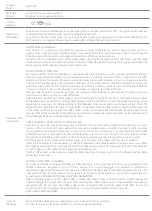
49
12) Make sure the lower mechanical seal is in place, then place the evaporator in position.
Secure the evaporator to the lower housing using the socket head cap screws and split
lock washers.
13) Remove the drier, then place the new drier in position.
14) Braze all fittings while purging with nitrogen gas flowing at a pressure of 3 to 4 PSIG.
15) Use an electronic leak detector or soap bubbles to check for leaks. Add a trace of
refrigerant to the system (if using an electronic leak detector), and then raise the
pressure using nitrogen gas (140 PSIG). Do Not use R-404A as a mixture with
pressurized air for leak testing.
16) Evacuate the system, and charge it with refrigerant. See the rating label inside the
icemaker for the required refrigerant charge. Hoshizaki recommends only virgin
refrigerant or reclaimed refrigerant which meets ARI Standard 700 (latest edition) be
used.
17) Replace the removed parts in the reverse order of which they were removed.
Note: Be sure to use new seal bolts. See "Seal Bolt Removal and Installation
Instructions" earlier in this section.
18) Replace the top and side panels in their correct positions.
19) Move the control switch to the "ICE" position.
20) Plug the unit into the electrical outlet, then move the power switch to the "ON" position
to start the automatic icemaking process.
21) Replace the front panel in its correct position.
6. Removal and Replacement of Mechanical Seal and Lower Housing
6a. Mechanical Seal
1) Drain the water from the evaporator.
a) Remove the front panel, then move the power switch to the "OFF" position.
b) Move the control switch to the "DRAIN" position.
c) Move the power switch to the "ON" position and allow the water to drain from the
evaporator.
d) Move the power switch to the "OFF" position, then turn off the power supply.
2) Remove the top and side panels.
3) Remove the strap connecting the spout to the chute assembly, then remove the spout.
4) Remove the extruding head seal bolts. Using the cutter, lift out the auger assembly.
5) The mechanical seal consists of two parts. One moves along with the auger, and the
other is fixed on the lower housing. If the contact surfaces of these two parts are worn,
cracked, or scratched, the mechanical seal may cause water leaks and should be
replaced.
6) Remove the socket head cap screws and split lock washers securing the evaporator to
the lower housing.
7) Raise the evaporator up to access the lower housing.













































